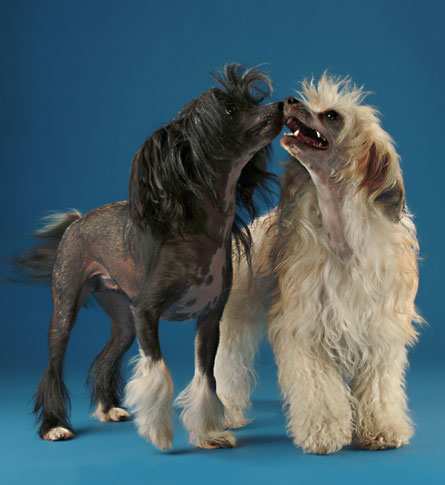- More than 2 years ago
Normal 0 false false false MicrosoftInternetExplorer4 Bald is beautiful. At least that’s what the Aztecs thought when it came it to their dogs.
Mexican hairless dogs are an ancient breed. For millennia, they have kept the secret of their bald beauty, even from the Aztecs who revered them. Now, an international team of researchers led by Tosso Leeb, a geneticist at the University of Bern in Switzerland, has discovered a mutation in a previously uncharacterized gene. This mutation, the team reports, makes Mexican hairless, Peruvian hairless and Chinese crested dog breeds bald, or partially bald.

A duplication of seven of the DNA letters in the FOXI3 gene is responsible for sparse or missing hair in the three breeds of dogs, the researchers report in the Sept. 12 Science. All 140 of the hairless dogs the researchers studied had the duplication, but their coated counterparts did not.
The mutation probably appeared about 4,000 years ago in Mexican hairless dogs and eventually passed through breeding into the other two dog breeds, Leeb says.
“It’s extremely improbable that an identical mutation would have arisen three times,” he says.
In mice, the protein encoded by FOXI3 is made in embryonic tissues that will develop into hair, whiskers and teeth, the researchers found. That’s important because the hairless dog breeds also show unusual dental features, such as missing or abnormally shaped teeth. Both symptoms are part of a condition known as canine ectodermal dysplasia.
Some people also have rare inherited diseases called ectodermal dysplasias. These diseases are characterized by sparse hair, dental problems, skin problems and defects of the nails and sweat glands. Mutations in one of several genes can cause the conditions, but the source of ectodermal dysplasias in some patients is unknown. Some of those patients may carry mutations in the FOXI3 gene, Leeb suggests.
Leeb and his colleagues had already ruled out about 10 candidate genes, including the canine equivalent of genes associated with human ectodermal dysplasia, as a source of hairlessness in dogs. The researchers compared hairless dogs to coated dogs of the same breed to locate the new gene. But the search was complicated by the fact that the project to decode the genetic blueprint, or genome, of the dog hadn’t yet completed the portion where FOXI3 is located.
The gene had been described in mice, “but what made our lives much more miserable was that the gene had not been characterized in humans,” Leeb says. As it turns out, the human genome sequence that scientists use as a gold standard for deciphering genetic information contained a mistake in the FOXI3 gene, making it impossible for computer programs to find it. Another human sequence contains the correct information, confirming the existence of FOXI3 in people, as well as in mice and dogs, Leeb says.






